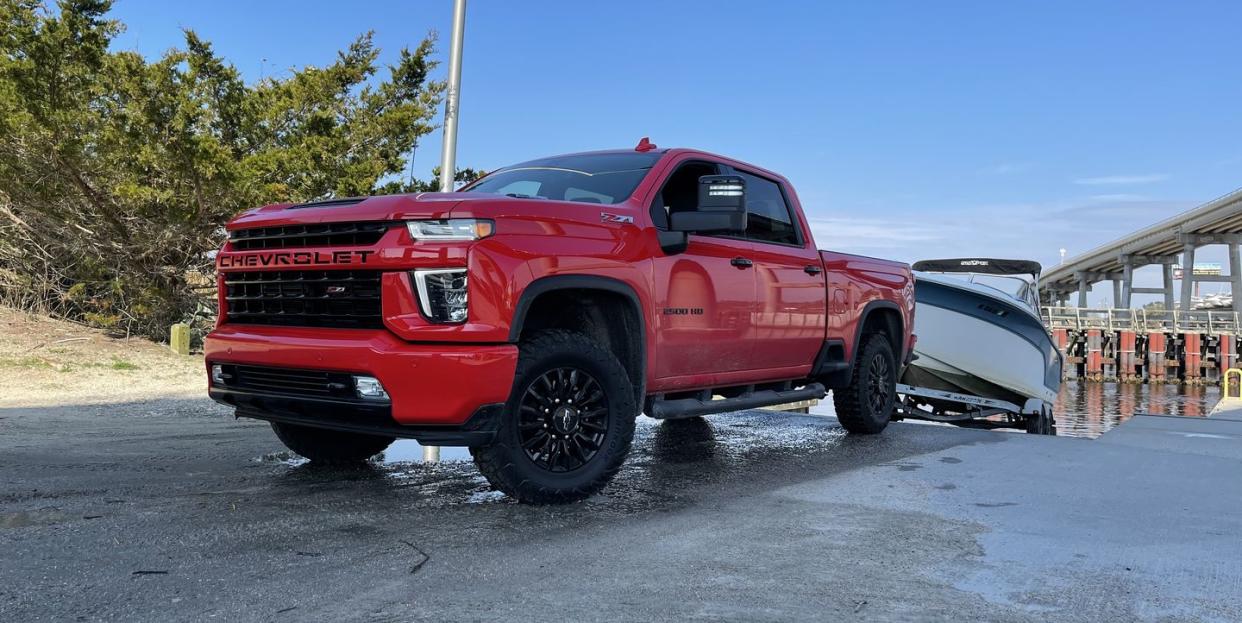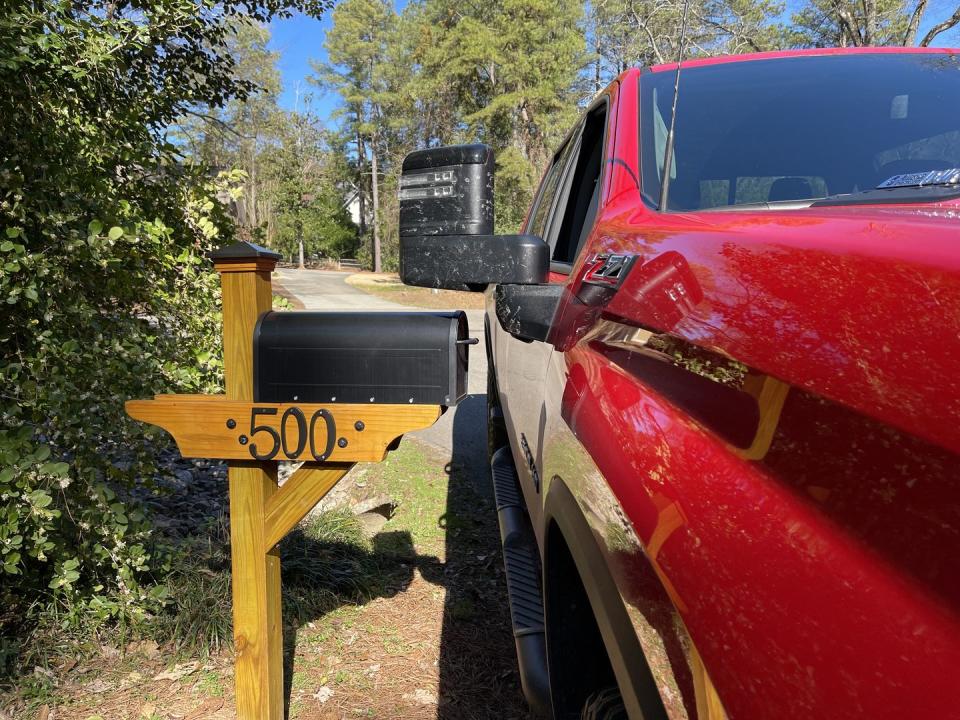Do You Really Need a Heavy-Duty Truck?

You don’t need this truck. OK, fine: you probably don’t need this truck. Unless you actually have a huge boat that you tow all the time, or a hydraulic dump trailer, or a small herd of horses. In which case, by all means, go ahead and get yourself a Chevy Silverado 2500 LTZ 4x4 with a 6.6-liter Duramax diesel. But if you conduct five minutes of self-reflection and can't find any burly equines or a thriving landscaping business in your life, please do not buy this truck. You do not need it, and in this case there’s a hard line between want and need.
And I can understand how you’d want such a thing. As a machine, it is cool, awesome in the original sense, like a ship or mountain. It has 445 horsepower and 910 pound-feet of torque. It stands nearly six feet, seven inches tall and weighs 8210 pounds. It can tow 18,500 pounds—and probably do so happily, since that’s about halfway to the 36,000 maximum this drivetrain can handle in a 3500 model. This is the truck that won our truck pull.
But you don’t arrive at this sort of capability without some compromises. Parking is a challenge, given that standard parking spaces tend to be shorter than the Silverado crew cab, which stretches more than 20 feet. Width is a dilemma, too. The truck is close to seven feet wide and the mirrors add another three feet to that. At one point, I reached an impasse on a residential street because a fellow HD truck was double-parked across from a mailbox, but I soon realized I could use the Silverado’s towering height to my advantage: a standard mailbox passes easily beneath its mirrors.

This height can be awkward in close quarters. The leading edge of the hood is nearly five feet from the ground. I drove the mighty 2500 to a veterinarian’s office, where signs at the end of each parking space advised customers to call or text to let them know you’d arrived. This was a problem, since I docked the Good Ship Silverado only to realize that the sign—which advertised the relevant phone number—was down somewhere in the vicinity of the massive bowtie logo on the grille. Cleverly, I thought to engage a forward-looking camera, but this truck didn’t have one. Luckily, the adjacent space was unoccupied, so I was able to peek at the next sign over. Curbside pick-up isn’t quite compatible with a monster pickup.
Have I mentioned the fuel economy? The Silverado 2500 is so massive it doesn’t carry an EPA rating. But in our testing, it earned 15 mpg overall and 19 mpg at a 75-mph cruise. That comports with my experience, which is that you’ll never see a fuel economy average that begins with a crooked number. At one painfully slow diesel station, I let the pump run for 10 minutes and then called it quits before the 36-gallon tank was full. Close enough.

How’s the ride, though? I’ll tell you once I have my retinas reattached. In the world of heavy-duty pickups, the Silverado 2500 offers one of the better rides, in that it has independent front suspension (Ford and Ram use a solid axle) and isn’t the full-starch 3500 strength. This is the truck I recommend to people who need an HD pickup but want to maintain some semblance of a car-like driving experience. And yet, there’s just no way (OK, no affordable way) to engineer suspension to occasionally cope with an extra 3000 pounds in the bed while also riding great when there’s not. The Silverado 2500 really wants to haul stuff, because when it’s empty it skips and shudders over bumps like a runaway shopping cart. If you dare to flip back the sippy tab on your piping hot Dunkin’ regular, you’d better be parked or driving on a road that was just paved yesterday. Or, maybe, hauling three or four thousand pounds in the bed. That smooths things right out.

I can say that with authority, because I possibly exceeded the Silverado’s payload rating by dumping two skid-steer scoops of gravel in the bed. I didn’t hit the scales, but a scoop is nominally 2000 pounds, so it’s probably accurate to say I had about two tons back there. The Silverado didn’t care a bit. The rear suspension, with its gargantuan leaf packs, barely seemed to squat, let alone bottom out. And the Duramax hardly noticed the extra weight. In my extremely informal and not at all official zero-60-mph-with-gravel test, it looked like the heavy Chevy hit 60 in less than nine seconds—even with an extra Toyota Avalon strapped to its shoulders. Braking wasn’t a problem, either. I simply engaged the exhaust brake and let the engine and 10-speed Allison transmission lend an assist with some aggressive downshifting. This was Truckasaurus Rex in its element.
But that’s a narrowly defined sweet spot: drives when you’re hauling something very heavy. In every other way, a half-ton truck is better. Or even a midsize truck—that load of gravel is no problem for a Honda Ridgeline and a utility trailer. Ultimately, heavy-duty trucks are all about the very specific ability to tow trailers that exceed the capacity of a half-ton. If you’ve got a 30-foot RV or a 30-foot boat or a some other enormous trailer that requires a guy in a Ford Ranger to drive a quarter-mile ahead of you to measure the height of the overpasses, then you should get an HD truck. If you don’t, then you’ll be manifestly happier with a lighter-duty truck, which won’t do that one thing (happily tow more than 10,000 pounds) but will excel at all other aspects of the truck-owning experience.
We’re in a strange place because, long ago, truck manufacturers realized that they could domesticate what is really a piece of heavy equipment, pumping up the luxury and turning a basic tool into a daily driver. This hasn’t happened with other vehicles of that ilk. We’re not casually rolling around in fancy Isuzu box trucks 360 days per year because we might have some couches to move on the other five days. But with pickups, we’re conditioned to prize versatility even when it’s irrational.
I mean, this is a sweet truck. And at $71,110, it ought to be. You get what you pay for, and you pay for what you get.
You Might Also Like

